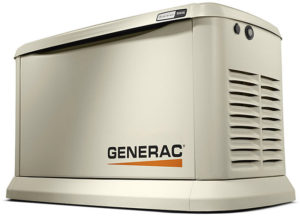[tm_pb_section admin_label=”section”][tm_pb_row admin_label=”row” make_fullwidth=”off” use_custom_width=”off” use_grid_padding=”on” width_unit=”on” custom_padding=”25px||25px|” padding_mobile=”off” allow_player_pause=”off” parallax=”off” parallax_method=”off” make_equal=”off” parallax_1=”off” parallax_method_1=”off” column_padding_mobile=”on”][tm_pb_column type=”4_4″][tm_pb_image admin_label=”Image” src=”http://www.calsunelectric.com/wp-content/uploads/2018/04/solar-battery.jpg” alt=”Battery backup and storage” show_in_lightbox=”off” url_new_window=”off” use_overlay=”off” animation=”left” sticky=”off” align=”center” force_fullwidth=”off” always_center_on_mobile=”on” use_border_color=”off” border_color=”#ffffff” border_style=”solid” /][/tm_pb_column][/tm_pb_row][tm_pb_row admin_label=”Row”][tm_pb_column type=”4_4″][tm_pb_text admin_label=”Text” text_orientation=”left” use_border_color=”off” border_color=”#ffffff” border_style=”solid”]
We’re often asked, “Does it make sense to add battery backup to my solar system for when PG&E goes down?” Typically our response is, “Cost-wise, not yet, but maybe in a few years.” For backup power, a propane generator is still the least expensive solution.
![]() Most consumers find that the cost of current battery backup systems aren’t worth the investment.* For example, the Sonnen battery backup system only holds 4 kWhs of power, yet costs around $12,000 installed. The Tesla Powerwalls hold 13.5-14 kWhs with cost estimates ranging from $8,000 – $12,000, installed, but are still very hard to get. Compare that to a home propane generator setup that costs about $4,000 – $5,000 and is capable of running for as long as needed, unlike the limited power available in a battery.
Most consumers find that the cost of current battery backup systems aren’t worth the investment.* For example, the Sonnen battery backup system only holds 4 kWhs of power, yet costs around $12,000 installed. The Tesla Powerwalls hold 13.5-14 kWhs with cost estimates ranging from $8,000 – $12,000, installed, but are still very hard to get. Compare that to a home propane generator setup that costs about $4,000 – $5,000 and is capable of running for as long as needed, unlike the limited power available in a battery.
Like most emerging technologies, battery storage is changing fast! It seems every month there’s word of a new device that hopes to be the Holy Grail of batteries. The theory is that once the cost of battery storage reaches $100/kWh it will be game over, and we can do away with 20th century power plants and our reliance on fossil fuels.
What’s the Best Battery for Solar Energy Storage?
The most popular batteries today are Lithium-Ion. These are the batteries found in your smartphones, laptops and electric cars. The main problem with Lithium-Ion batteries is that they tend to get overheated if they are charged or discharged too quickly. You’ve probably heard about phones and hoverboards catching fire? That’s thanks to the Lithium-Ion batteries inside. Larger battery packs, like for electric cars or homes, usually have some sort of cooling or venting system that helps counteract the heating issue.
 A newer technology that’s gaining ground is Lithium Ferro Phosphate (LFP) batteries. These batteries have all of the advantages of Lithium-Ion without the heat issues. They claim to have double the life span of Lithium-Ion as well. The military is starting to use LFP batteries because of their outstanding performance under extremely rugged and harsh conditions. Simpliphi, a company based in Ojai, CA, is one of the current leaders in this category.
A newer technology that’s gaining ground is Lithium Ferro Phosphate (LFP) batteries. These batteries have all of the advantages of Lithium-Ion without the heat issues. They claim to have double the life span of Lithium-Ion as well. The military is starting to use LFP batteries because of their outstanding performance under extremely rugged and harsh conditions. Simpliphi, a company based in Ojai, CA, is one of the current leaders in this category.
There are other technologies including a saltwater-based battery by a company called Aquion. This showed a lot of hope, but despite the backing of investors like Bill Gates, Aquion has recently filed for bankruptcy. So we’ll see if this technology sticks around or goes the way of the Dodo.
Bottom Line
 If you’re still itching for a battery backup system, you can get them now but they are pricey. We see battery technology evolving just like personal computers did in the 80’s and 90’s. Storage capacity will go up and prices will go down over the next few decades, ultimately making energy storage available and affordable for everyone. But for now we recommend a home propane generator to keep your system up and running even when PG&E is down.
If you’re still itching for a battery backup system, you can get them now but they are pricey. We see battery technology evolving just like personal computers did in the 80’s and 90’s. Storage capacity will go up and prices will go down over the next few decades, ultimately making energy storage available and affordable for everyone. But for now we recommend a home propane generator to keep your system up and running even when PG&E is down.
CalSun Electric & Solar Systems Inc., is an authorized dealer of Generac backup generators. We also install battery backup systems if you would rather go that route. Give us a call for a quote, (805) 239-0111.
* Solar customers must pay PG&E a minimum charge for power being pulled from the grid even though they are getting credit for power produced during the day. So when the sun goes down, it’s a cloudy day, or anytime you are using more power than the panels are producing, you must pay 2 Ω cents per kWh. If these charges add up to say $15/month, it really does not make financial sense to spend $12,000 on a battery storage system, as the payback period would be over 50 years. If you just want backup power for when PG&E goes down, consider a propane generator.
[/tm_pb_text][/tm_pb_column][/tm_pb_row][/tm_pb_section]
